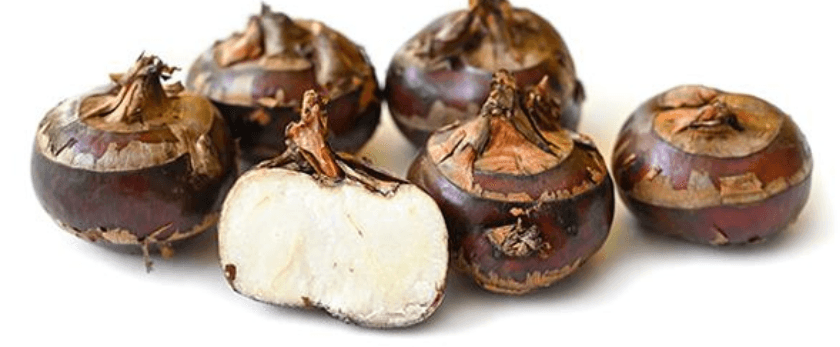Water chestnuts are a delicious and nutritious addition to any meal, and growing them at home is easier than you may think. Not only are they a tasty treat, but they also have numerous health benefits and are environmentally friendly. In this article, we will discuss how to grow water chestnuts, the best time to grow them, and common problems you may encounter. So let's get started!
How to Care for Water Chestnuts
Water chestnuts are aquatic plants that require specific care to thrive. Here are some essential tips for caring for your water chestnuts:
Watering
As the name suggests, water chestnuts need a lot of water to grow. They should be grown in a container filled with at least 6 inches of water. Make sure to keep the water level consistent, as fluctuations can cause stress to the plants. If you live in a hot and dry climate, you may need to water your water chestnuts more frequently.
Light
Water chestnuts prefer full sun, so make sure to place your container in a spot that receives at least 6 hours of sunlight per day. If you are growing them indoors, you can use a grow light to provide sufficient light.
Soil
Water chestnuts grow best in a rich, loamy soil that is slightly acidic. You can use a potting mix specifically designed for aquatic plants or create your own by mixing equal parts of compost, peat moss, and sand. Make sure the soil is well-draining to prevent waterlogging, which can lead to root rot.
Fertilizer
Water chestnuts are heavy feeders and require regular fertilization to grow well. You can use a balanced liquid fertilizer once a month or a slow-release fertilizer at the beginning of the growing season. Avoid using fertilizers high in nitrogen, as this can cause excessive leaf growth and hinder the development of the chestnuts.
Pruning
Pruning is not necessary for water chestnuts, but you can remove any dead or damaged leaves to keep the plant healthy. You can also trim the plant's roots if they become too long and start to tangle.
What is the Best Time to Grow Water Chestnuts?
Water chestnuts are typically grown in the spring and summer months when the weather is warm and the days are longer. They require a minimum temperature of 70°F to grow, so make sure to wait until the last frost has passed before planting them. You can also start them indoors and transplant them outside once the weather warms up.
Common Problems with Water Chestnuts
Like any plant, water chestnuts can face some challenges while growing. Here are some common problems you may encounter and how to address them:
Pests
Water chestnuts are relatively pest-free, but they can attract aphids, snails, and slugs. You can use organic pest control methods such as neem oil or handpicking to get rid of these pests. Avoid using chemical pesticides, as they can harm the environment and beneficial insects.
Diseases
The most common disease that affects water chestnuts is root rot, which is caused by overwatering or poor drainage. To prevent this, make sure to water your plants consistently and use well-draining soil. You can also add a layer of gravel at the bottom of the container to improve drainage.
Nutrient Deficiencies
If you notice yellowing leaves or stunted growth, your water chestnuts may be experiencing a nutrient deficiency. You can address this by fertilizing your plants with a balanced fertilizer or adding compost to the soil.
Responsible Disposal Methods
When it's time to harvest your water chestnuts, it's essential to dispose of the plant and its parts responsibly. Do not dump them in natural water bodies, as they can become invasive and harm the ecosystem. Instead, you can compost the plant or use it as mulch in your garden. You can also donate the plant to a local community garden or composting facility.
Conclusion
Growing water chestnuts is a fun and rewarding experience that can also benefit the environment. By following the care tips mentioned in this article, you can enjoy a bountiful harvest of these delicious and nutritious plants. Remember to be mindful of responsible disposal methods and share your knowledge with others to promote a greener and more sustainable future. Happy growing!










